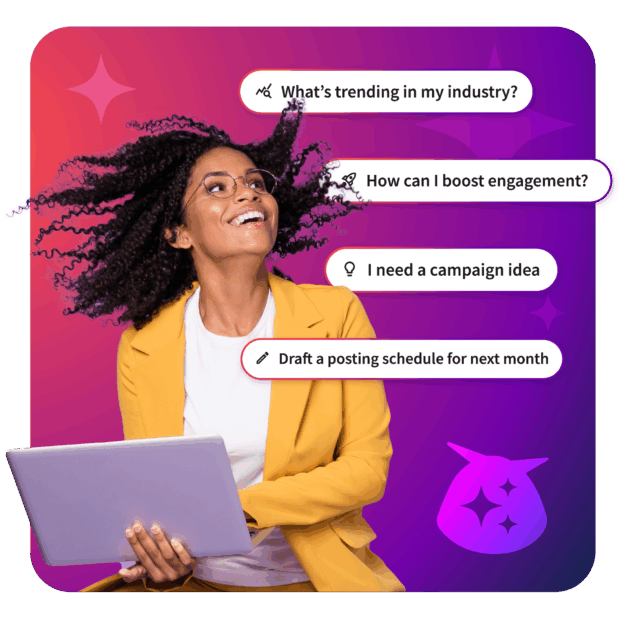By most estimates, around 65% of startups that could’ve been great end up crashing because the founders fall out.
Which leads us to a logical conclusion: picking “whoever says yes” as your co-founder ain’t really a winning strategy. At least statistically.
An obvious alternative is to build solo. Which can be either brilliant or disastrous – depending on whether you’ve got enough skills, stamina, and blind optimism to pull it off. Oh, and enough charm to convince investors to risk betting on you and only you.
When I caught my startup bug, I was pretty certain that I needed a cofounder. I’ve seen way too much of solo founding and CEO-ing while I was working for my previous employer. I’d already learned it the hard way (thank God, not on my dime!) how important it is to have a sound power balance and a source of mutual decision making challenge in the management.
The problem was that I had absolutely zero options in mind.
Ideally, you start a company with someone you’ve worked with for years. Someone you’ve survived bad bosses and pitch meetings with. Someone whose panic attacks and panic jokes you’ve both seen firsthand.
I didn’t have that. I have plenty of good friends, but none of them would’ve been mad enough to embark on this journey with me.
But the absence of perfect conditions has never been a good enough reason for me not to try.
(Some names below have been changed for common courtesy and sense)
📌 Attempt #1: Antler UK
First stop: Antler UK, an accelerator program that, among other things, helps founders match with cofounders.
I’ll save my full Antler experience for another post (leave a comment below if that’d be of interest). But cofounder-wise… it wasn’t exactly a roaring success. Because, frankly, that’s the downside of sector-agnostic accelerators – it’s really hard to find someone who:
-
Has the same interests as you sector wise
-
Has complimentary skillset to yours
-
Is actually someone you’d enjoy working with.
Out of a cohort of 69 people, only one — let’s call him Simi for now — felt like a good fit for what I had in mind. Simi had a strong BizDev background, great enthusiasm and an array of personal traits that I really value in people – good working ethics, empathy, accountability, and so on. We worked together for a few weeks and even started sketching out the first pitches of the product.
Everything seemed promising, but there was one thing that broke us apart.
The feedback from Antler partners.
At the time, my idea was deemed not quite VC-backable. Which, frankly, was true. It could have been slightly shifted in the right direction (which has happened to imii in the past few months of this year, but it’s a different story). But at the time, the feedback we got was occasionally pretty destructive.
Simi was feeling increasingly anxious that we wouldn’t raise. I was trying to stay strong, but unfortunately, I was already spiralling into my depression (which I got officially diagnosed and treated later, but that’s a story for another time, too).
Neither of us had enough energy to stand up to critique and prove them wrong.
Simi moved on to explore other teams while the programme was still on. No drama, no hard feelings. Honestly, I still respect him for trying.
Lesson learned: finding a cofounder through a generalist accelerator can work — but you’re literally rolling dice in a thunderstorm. Sector-specific programs might give you better odds.
But one thing Antler didgive me — something much more useful long-term — was a framework for evaluating cofounder fit properly.
, that framework would save me a lot of heartache.
📌 Attempt #2: The Random Intro
Sometime later, I met Nicole, a talented AI engineer, through a networking event. At the time, she was also looking for a new challenge. After a couple of coffee chats, we decided to give it a shot.
But from the start, something felt… off. There was a subtle, yet vivid mismatch in energy, tempo, communication. Little progress. Little alignment. And a persistent gut feeling that kept humming inside of me:
“This isn’t right.”
After taking a much-needed holiday, I texted Nicole suggesting we hit pause.
“Oh yeah, I’ve also been thinking it’s all a bit farfetched” – was her response.
I blinked at my screen. That wasn’t quite what I had said — but fair enough. Better a clean pause than a dragged-out misalignment.
Sometimes it’s not flaming red flags. Sometimes it’s just the quiet voice in your gut going: nope.
You’d do well to listen.
📌 Attempt #3: The LinkedIn DM
Somewhere during my post-Antler survival sprint, I started posting more openly on LinkedIn — raw reflections, lessons learned, no sugar-coating. That’s how Marc found me. He slid into my DMs — AI engineer, similar founder program background, same hunger to build something real.
On paper, everything aligned beautifully. In reality… There was no momentum.
Partly because I was still figuring out what exactly I could delegate to a technical cofounder at such a super early stage of my venture (which was still at its pitchdeck state at the time).
Partly because Marc was… well, not exactly charging ahead either. While I was hustling — pitching Imii anywhere they’d hand me a mic, whipping up our WordPress site from scratch, mapping our first B2B strategy… Marc sent three or four cold emails to relocation agencies. Got no responses. Shrugged. And that was that.
When I gently nudged for more, he admitted he was overwhelmed. And — the bigger truth — that he had fallen out of love with the project.
Sure enough, I thanked him for the honesty. After all, better an honest no now than a slow, resentful yes later.
We parted ways on good terms. He’s building something different in his home country now. We still chat to each other here and then.
📌 Attempt #4: Halloween, Chaos, and a Real Cofounder
By late October, I was still at that – a deck, a handful of user interviews, and that’s pretty much it. But I was still hopeful and determined.
So one day, I signed up to pitch Imii at RareFounders — my first open-mic startup event outside Antler. My first public pitch of imii, too.
Two days before, the organizers sent a cheeky email: “Halloween’s coming. Let’s wear costumes – a winner of the costume competition will get an investor meeting!”
I didn’t need to be asked twice – a costume party it is. So I showed up in full attire.
Now, ladies and gentlemen, may I present to you how I first appeared in front of the crowd pitching my social impact startup for the first time.
And yes, that’s how my then-future cofounder saw me for the first time.
Alex came to talk to me after my pitch. She introduced herself as a product manager with an ML and AI background, on the lookout for a startup to join. Something about her seemed… Right. At least, the connection was definitely there. So we agreed to swap contacts and catch up again.
At the time, I was still wrapping things up with Marc, but after that chapter closed, Alex and I sat down properly for a conversation. And we talked. Really talked. About what we both wanted and what we feared. About money, equity, decision rights, boundaries, founder conflicts, mental health, ambitions, burnout.
And obviously, we decided to give it a shot – and started our “trial” period.
Fast forward to January, we officially registered Imii and signed our founder agreements.
that month, I caught the worst flu of my life — the kind of flu where an ambulance had to be involved (but turned out to be unhelpful anyway). Alex offered to travel all the way across London, on a freezing night, to drag my half-conscious self into an ER. And while I didn’t take her up on that offer (germs and logistics) — but the fact she offered told me enough to know I was ready to trust this person.
And here we are. Over a year later.
Still standing. Still pushing. Still figuring it out, one step at a time.
Happy ending?
Maybe.
Hopefully just a very good beginning.
To be continued.











